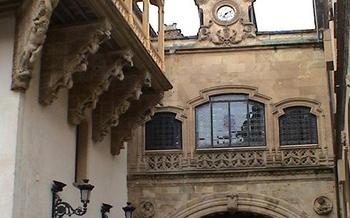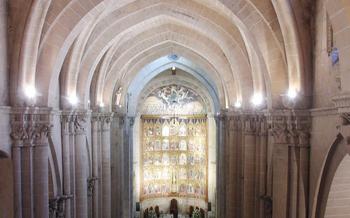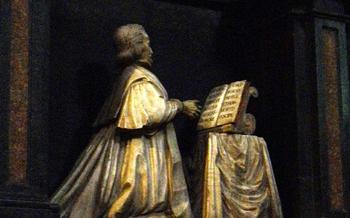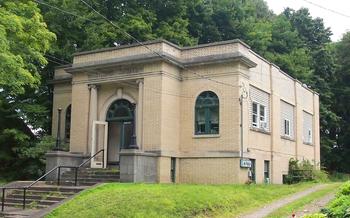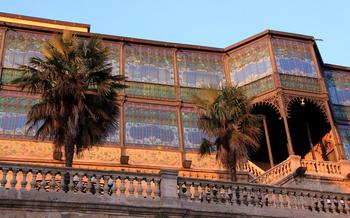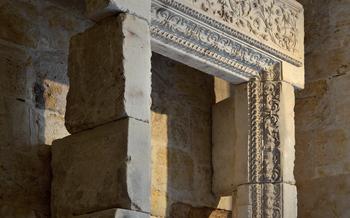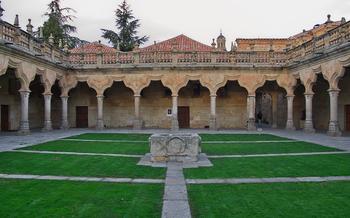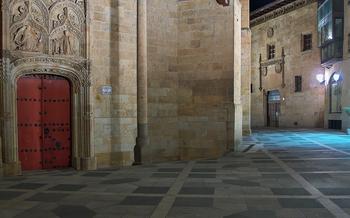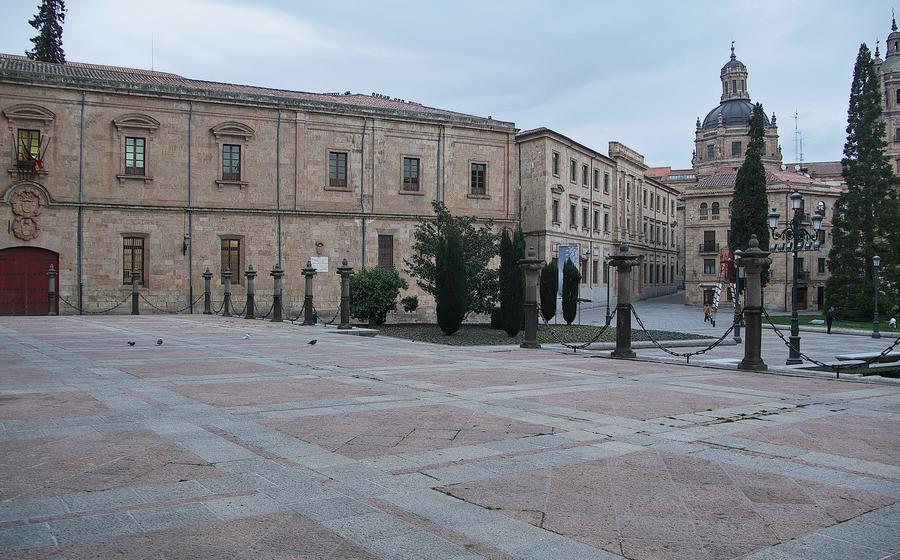
Plaza de Anaya
- Plaza de Anaya
- History and Origins
- Architectural Highlights
- New Cathedral of Salamanca
- University of Salamanca
- Casa de las Conchas
- Clerecía Church
- San Esteban Convent: A Tapestry of History and Divine Beauty
- Casa Lis Museum
- Nightlife and Entertainment
- Shopping and Markets
- Transportation Options
- Insider Tip: Unveiling Salamanca's Hidden Treasures
Plaza de Anaya
Plaza de Anaya is a vibrant square in the heart of the historic city of Salamanca, Spain. With its rich history and architectural beauty, it is one of the city's most iconic landmarks. The plaza is surrounded by some of the most important buildings in Salamanca, including the Old Cathedral, the New Cathedral, and the University of Salamanca. It is a popular gathering place for locals and tourists alike, and often hosts cultural events and festivities.
The plaza is named after Don Diego de Anaya Maldonado, the Bishop of Salamanca who founded the University of Salamanca in the 13th century. The square was originally used as a market place, but over the centuries it has been transformed into a cultural and social center. Today, it is a popular spot for locals to relax, enjoy a coffee or a meal, and take in the beauty of the surrounding architecture.
History and Origins
The Plaza de Anaya is a product of the city's medieval expansion. In the 11th century, Salamanca was surrounded by walls, and the area that would become the plaza was initially occupied by the Old Cathedral. As the city grew and prospered, the need for a larger cathedral arose, leading to the construction of the New Cathedral in the 16th century. The plaza developed around these two magnificent structures, becoming a central point for religious, academic, and social life in Salamanca.
Throughout history, the Plaza de Anaya has witnessed numerous significant events. It was a place of celebration and mourning, hosting royal processions, religious festivals, and solemn ceremonies. It was also a place of learning and knowledge, with the establishment of the University of Salamanca in the 13th century. The plaza's central location and symbolic importance made it a stage for many of the city's most pivotal moments.
Architectural Highlights
The Plaza de Anaya is a treasure trove of architectural wonders, showcasing a harmonious blend of Romanesque, Gothic, Renaissance, and Baroque styles. The Old Cathedral, with its sturdy Romanesque exterior and intricate interior, stands as a testament to the city's medieval roots. In contrast, the New Cathedral, with its soaring Gothic spires and ornate facade, represents the city's transition into the Renaissance era. Surrounding the plaza, elegant Renaissance and Baroque buildings, with their intricate carvings and delicate balconies, add to the square's architectural charm.
One of the most striking features of the plaza is the unique craftsmanship and attention to detail found in its buildings. The Old Cathedral boasts a beautifully preserved cloister, while the New Cathedral's intricate carvings on its facade depict scenes from the Bible. The Casa de las Conchas, with its facade adorned with hundreds of seashells, is a testament to the city's maritime history. Every nook and cranny of the Plaza de Anaya reveals a hidden gem, waiting to be discovered and admired.
New Cathedral of Salamanca
The New Cathedral of Salamanca, also known as the Cathedral of the Assumption of the Virgin Mary, is a stunning testament to Gothic architecture. Its construction began in the 16th century as an expansion of the Old Cathedral, aiming to accommodate the growing population of the city. The cathedral's completion took over two centuries, resulting in a harmonious blend of Gothic and Renaissance elements.
The New Cathedral's facade is a masterpiece of intricate carvings and sculptures, showcasing the skill and artistry of its creators. The main entrance, known as the Puerta de Ramos, features a magnificent tympanum depicting scenes from the life of Jesus Christ. The Puerta de las Torres, on the north side, boasts an equally impressive tympanum portraying the Last Judgment.
Inside, the cathedral's grandeur continues with soaring vaulted ceilings, elegant stained glass windows, and elaborate altarpieces. The Capilla Mayor, or main chapel, is particularly noteworthy for its intricate carvings and stunning altarpiece, which depicts scenes from the life of the Virgin Mary.
While the exterior of the Old Cathedral may be more austere, the interior of the New Cathedral is a testament to the opulence and grandeur of Gothic architecture. Together, these two cathedrals form an iconic architectural duo that has become synonymous with the city of Salamanca.
University of Salamanca
The University of Salamanca stands as a beacon of academic excellence, deeply intertwined with the city's rich history and cultural fabric. Founded in 1218, it ranks among the oldest universities in Europe, bearing witness to centuries of intellectual pursuit and scholarly endeavors. Its architectural grandeur mirrors its academic prestige, with iconic landmarks such as the Escuelas Mayores, a stunning example of Plateresque architecture, and the Patio de Escuelas, a serene courtyard surrounded by intricate carvings.
The university has played a pivotal role in shaping the city's intellectual and cultural development, fostering an environment of learning and innovation that has attracted scholars and students from around the world. Its illustrious alumni include renowned figures such as Miguel de Unamuno, a philosopher and writer who left an indelible mark on Spanish literature, and Francisco de Vitoria, a Dominican friar and theologian whose writings on international law and human rights continue to influence modern thought.
Casa de las Conchas
Among the architectural wonders that grace the Plaza de Anaya, the Casa de las Conchas stands out with its captivating facade adorned with over 300 seashells. This unique embellishment, which gives the building its name, has become an iconic symbol of Salamanca.
The Casa de las Conchas was constructed in the 15th century by Rodrigo Arias Maldonado, a knight of the Order of Santiago, who commissioned the intricate seashell decorations as a testament to his devotion to the order. The seashells, meticulously arranged in rows and columns, are believed to represent the symbol of the Order of Santiago, the scallop shell.
Beyond its distinctive facade, the Casa de las Conchas boasts a harmonious blend of Gothic and Renaissance architectural elements. The building's elegant stonework, intricate carvings, and ornate windows reflect the transition from the Gothic to the Renaissance style that characterized this period in Spanish architecture.
Today, the Casa de las Conchas serves as a public library, housing a vast collection of books and manuscripts that contribute to Salamanca's rich intellectual heritage. Visitors can explore the library's collection, admire the intricate seashell facade, and delve into the fascinating history that this remarkable building embodies.
Clerecía Church
The Clerecía Church, an architectural masterpiece, stands tall as a symbol of Baroque grandeur in the Plaza de Anaya. Constructed in the 17th century, its majestic facade boasts intricate carvings and sculptures that narrate biblical scenes and pay homage to the Society of Jesus, who played a pivotal role in the church's foundation. The interior of the church is adorned with elaborate frescoes, gilded altars, and a stunning dome that creates an awe-inspiring ambiance.
Once a college for the Jesuit order, the Clerecía Church has undergone extensive restoration efforts to preserve its architectural integrity and artistic beauty. Visitors can admire the intricate details of the facade, which depict scenes from the lives of saints and biblical figures, while the interior boasts a collection of valuable paintings, sculptures, and religious artifacts. The church's impressive dome, a testament to Baroque engineering, allows natural light to flood the interior, casting a warm glow on the ornate decorations.
As one of the most significant examples of Baroque architecture in Spain, the Clerecía Church attracts visitors from around the world who come to marvel at its architectural splendor and immerse themselves in its rich history. Its ongoing restoration efforts ensure that this architectural gem will continue to captivate and inspire generations to come.
San Esteban Convent: A Tapestry of History and Divine Beauty
In the heart of Salamanca, the San Esteban Convent stands as a testament to the city's rich religious heritage and architectural prowess. Founded in the 13th century by the Dominican Order, this magnificent complex has witnessed centuries of devotion, scholarship, and artistic patronage.
The convent's Gothic origins are evident in its soaring spires and intricate ribbed vaults, while Renaissance influences can be seen in the elegant cloister, with its graceful arches and serene atmosphere. The interior of the church boasts an array of artistic treasures, including stunning altarpieces, intricate carvings, and a magnificent stained-glass window depicting the life of Saint Stephen.
Beyond its architectural splendor, the San Esteban Convent has played a significant role in the intellectual and spiritual life of Salamanca. The Dominican friars established a renowned school of theology within the convent walls, attracting students from across Europe and contributing to the city's reputation as a center of learning.
Today, the San Esteban Convent serves as a cultural center and museum, offering visitors a glimpse into its storied past and showcasing its artistic and architectural wonders. The convent's library, with its collection of rare books and manuscripts, provides a glimpse into the intellectual pursuits of the Dominican friars. The cloister, with its peaceful ambiance and lush greenery, invites visitors to contemplate and find solace.
The San Esteban Convent is a must-see for anyone interested in history, architecture, or spirituality. A visit to this sacred space offers a unique opportunity to connect with the past and experience the enduring legacy of faith and devotion in Salamanca.
Casa Lis Museum
The Casa Lis Museum stands as a testament to the artistic and cultural heritage of Salamanca. Completed in 1905, this architectural masterpiece showcases the essence of the Art Nouveau movement. Designed by the renowned architect Miguel de Lis, the building boasts a distinctive facade adorned with intricate wrought-iron details, colorful ceramics, and floral motifs.
Inside, the museum houses a remarkable collection of Art Nouveau and Art Deco artifacts, showcasing the evolution of these artistic styles from the late 19th century to the early 20th century. Visitors can admire a diverse array of paintings, sculptures, furniture, ceramics, and decorative objects, each representing the unique aesthetic and craftsmanship of the era.
The Casa Lis Museum not only serves as a repository of artistic treasures but also as a vibrant cultural center. It regularly hosts temporary exhibitions, concerts, and cultural events, providing a platform for contemporary artists and performers to showcase their talents.
A visit to the Casa Lis Museum offers a captivating journey into the world of Art Nouveau and Art Deco, allowing visitors to appreciate the beauty and artistry of these influential movements. Whether you're an art enthusiast, a history buff, or simply seeking a unique cultural experience, this museum is sure to leave a lasting impression.
Nightlife and Entertainment
As the sun sets over the Plaza de Anaya, a different kind of energy fills the air. The plaza transforms into a vibrant hub of nightlife and entertainment, attracting both locals and tourists alike. The streets come alive with the sounds of laughter, music, and conversation as people spill out of bars and restaurants, filling the plaza with a lively atmosphere.
For those seeking a taste of the local cuisine, there are numerous tapas bars and restaurants to choose from. Indulge in delicious Spanish tapas, such as patatas bravas, croquetas, and jamón serrano, while sipping on a glass of wine or a refreshing cerveza. Many of these establishments offer outdoor seating, allowing you to soak up the vibrant atmosphere of the plaza.
If you're in the mood for something more lively, there are several bars and clubs in the vicinity where you can dance the night away. From salsa to electronic music, there's something for every taste. Keep an eye out for cultural events and performances that often take place in the plaza, such as concerts, theater productions, or traditional Spanish dancing.
While enjoying the nightlife, it's essential to prioritize safety. Be aware of your surroundings, keep an eye on your belongings, and avoid walking alone at night. If you're unsure about an area or situation, don't hesitate to ask a local for advice or assistance.
Shopping and Markets
Plaza de Anaya is a treasure trove for shoppers and market enthusiasts. The surrounding streets are lined with an array of shops, from souvenir stores to designer boutiques. You'll find everything from traditional crafts and mementos to unique contemporary pieces.
The local markets are a must-visit for those seeking fresh produce, artisanal products, and unique finds. The Mercado de Abastos, located just a short walk from the plaza, is a bustling hub of activity. Here, you can browse stalls selling fresh fruits, vegetables, meats, cheeses, and more.
For souvenirs and traditional crafts, head to the souvenir shops in the plaza. You'll find a wide selection of items, including ceramics, leather goods, and jewelry. Be sure to haggle for the best prices, as bargaining is a common practice in Spanish markets.
If you're looking for something truly special, take a stroll through the surrounding streets and explore the designer boutiques and specialty stores. You'll find unique clothing, accessories, and home goods that are sure to catch your eye.
Insider Tip: For a unique shopping experience, visit the Mercado de Artesanía, located just a few steps from the Plaza de Anaya. Here, you'll find stalls selling handmade crafts and souvenirs from all over Spain. It's the perfect place to find a one-of-a-kind gift or souvenir to remember your trip to Salamanca.
Transportation Options
Getting to the Plaza de Anaya is a breeze, with multiple transportation options available.
-
On Foot: The plaza is conveniently located within the historic center of Salamanca, making it easily accessible by foot. Stroll through the charming streets and soak in the city's ambiance as you make your way to the plaza.
-
By Bus: Salamanca's efficient bus network provides several lines that stop near the Plaza de Anaya. Check the bus routes and schedules to find the one that best suits your needs.
-
By Taxi: Taxis are readily available in Salamanca, offering a convenient and direct mode of transportation to the Plaza de Anaya. Simply hail a taxi or pre-book one to ensure a smooth journey.
-
Parking: If you prefer to drive, there are several parking options near the Plaza de Anaya. Public parking garages and street parking are available, so you can easily find a spot to leave your vehicle.
-
Bike Rentals: Salamanca is a bike-friendly city, with designated bike lanes and rental shops scattered throughout. Rent a bike and explore the city's many attractions, including the Plaza de Anaya, at your own pace.
Insider Tip: Unveiling Salamanca's Hidden Treasures
Amidst the grandeur of the Plaza de Anaya, discover secret spots and hidden gems that reveal the city's rich history and charm. Step into the inconspicuous entrance of the Hospedería Fonseca, a former 16th-century college, and be transported to a serene courtyard adorned with Renaissance frescoes. For a unique perspective, climb the narrow staircase of the Clerecía Tower, offering breathtaking panoramic views of the city's rooftops and beyond.
Indulge in local cuisine at the Mercado Central, a bustling indoor market where you can savor fresh seafood, traditional tapas, and local delicacies. Don't miss the opportunity to sample the renowned "hornazo," a savory pastry filled with sausage, eggs, and spices, a specialty of Salamanca.
For an unforgettable experience, plan your visit during the annual "Noche de Brujas" (Witches' Night) in June, when the city transforms into a magical realm with bonfires, witches' markets, and enchanting performances. Embrace the city's vibrant nightlife by exploring the lively bars and clubs around the plaza, where you can mingle with locals and enjoy live music until the wee hours.
Remember, the best way to discover Salamanca's hidden treasures is to wander aimlessly through its charming streets, allowing the city's beauty and history to captivate your senses.
